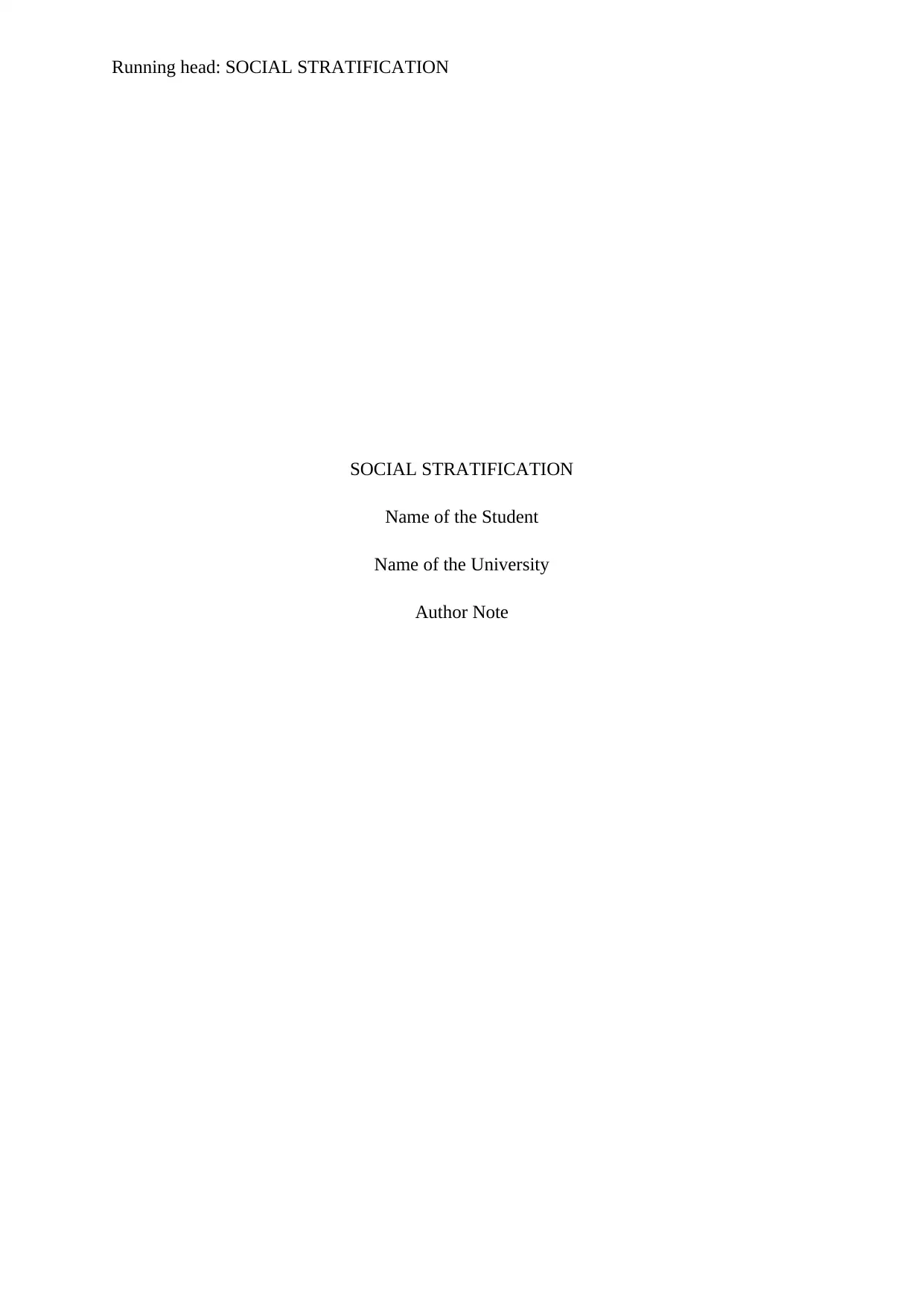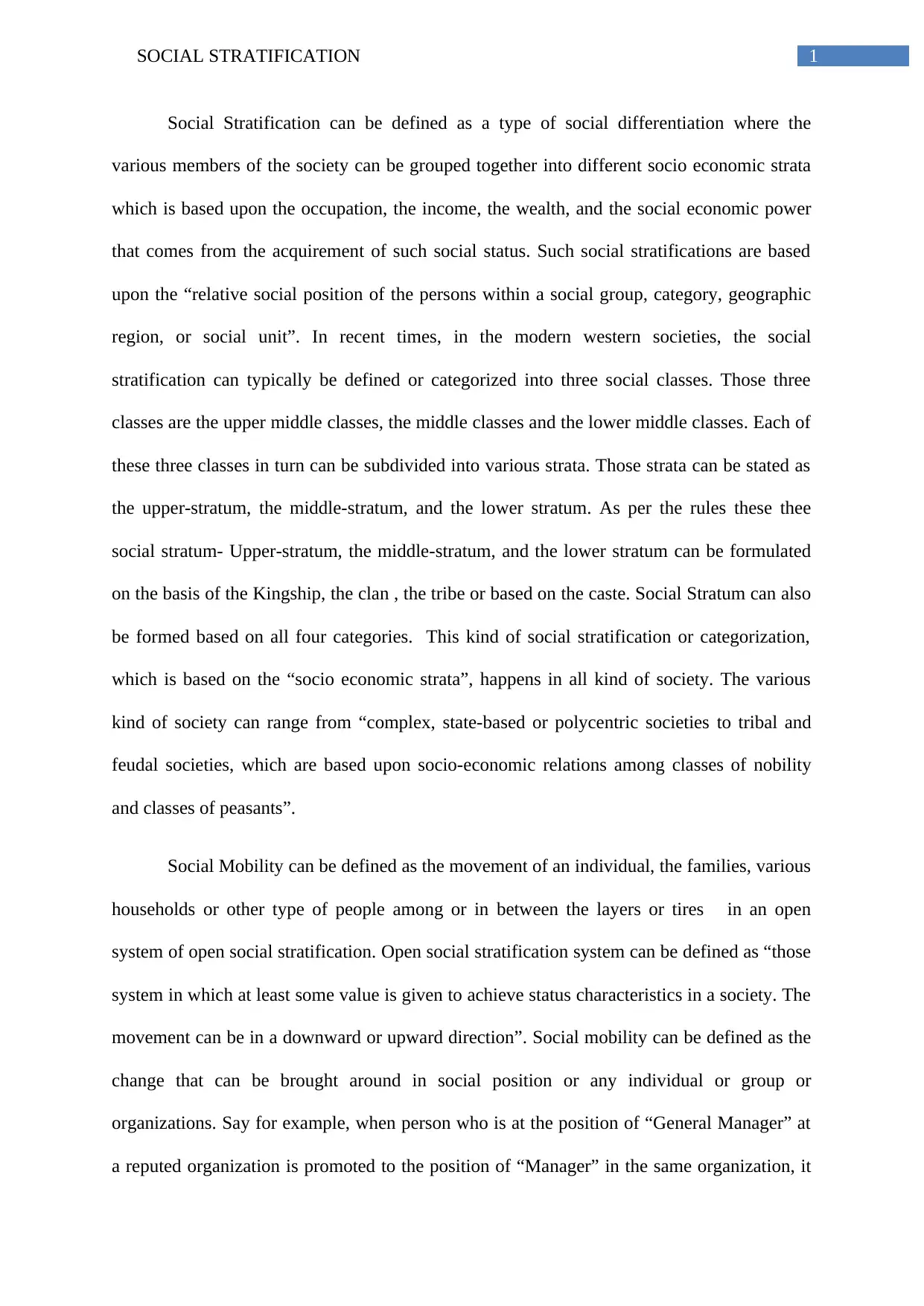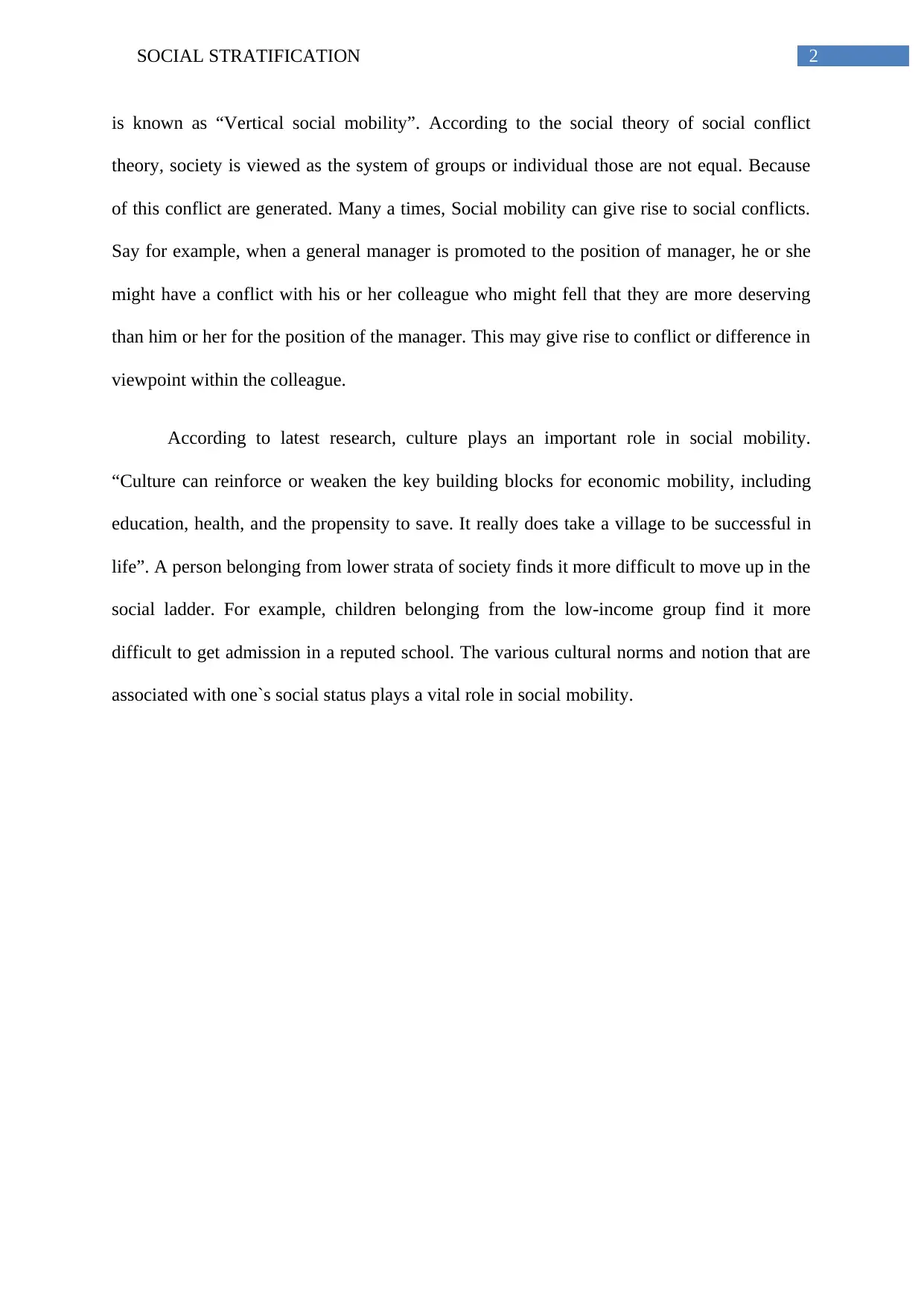Social Stratification: Social Classes and Mobility Analysis
VerifiedAdded on 2022/10/15
|3
|658
|29
Report
AI Summary
This report delves into the concept of social stratification, which is defined as the hierarchical arrangement of individuals and groups based on socioeconomic factors like income, wealth, and social status. It examines the different social classes, including upper, middle, and lower strata, and how they are formed within various societal contexts, from tribal to modern western societies. The report discusses social mobility, explaining how individuals and groups move between these strata and the impact of open social stratification systems. It also explores the conflict theory perspective, highlighting how social mobility can generate conflicts within society. Furthermore, the report emphasizes the role of culture in influencing social mobility, particularly the challenges faced by individuals from lower socioeconomic backgrounds, such as limited access to quality education. Overall, the report provides a comprehensive overview of social stratification, social classes, social mobility, and the factors that shape it.
1 out of 3










![[object Object]](/_next/static/media/star-bottom.7253800d.svg)